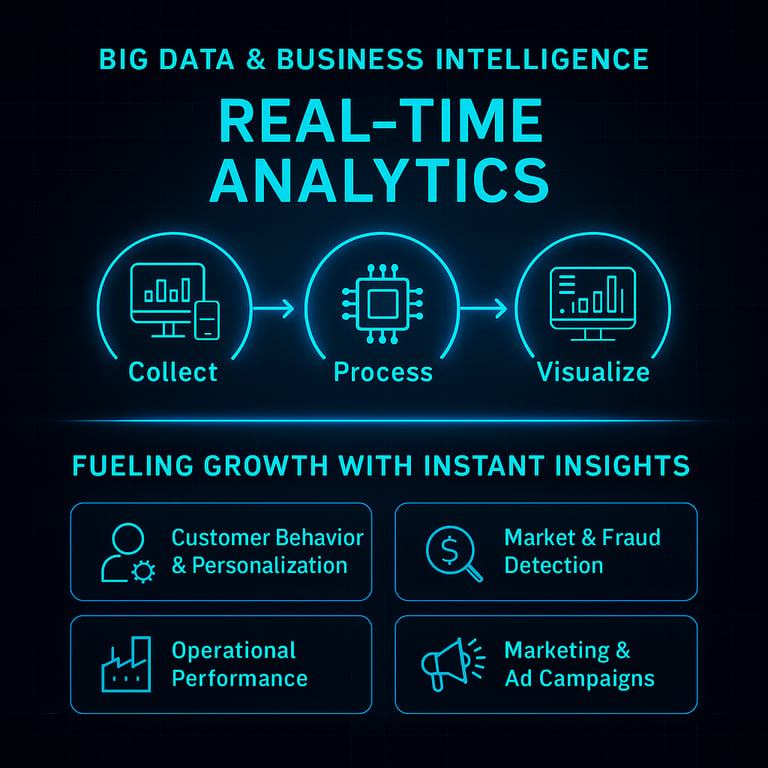Big data solutions and business intelligence (BI) tools.
Mr. Hunain Panjwani
10/4/20252 min read


How it Works: Collect, Process, Visualize 💻
The process of real-time analytics involves a continuous, three-step loop:
Collect: Data is collected from a wide range of sources as it's generated. This can include website clickstreams, social media interactions, GPS data from a delivery truck, or sensor data from a factory floor.
Process: The raw, unstructured data is then processed instantly using stream processing technologies. This is where the magic happens; instead of storing data and analyzing it later, the system analyzes the data "in motion" to derive immediate insights.
Visualize: The insights are then presented on a live dashboard or a BI tool that updates in real-time. This visualization makes the data easy to understand and allows decision-makers to see key trends, anomalies, and opportunities as they happen.
Fueling Growth with Instant Insights ⛽
Real-time analytics provides instant insights that power a variety of business functions, leading to tangible growth:
Customer Behavior and Personalization: E-commerce businesses use real-time analytics to track a customer's browsing habits and purchase history. This allows them to instantly offer personalized product recommendations or targeted discounts, which can significantly boost conversion rates and revenue.
Market and Fraud Detection: Financial institutions use real-time analytics to monitor transactions as they occur. If a transaction deviates from a customer's typical spending patterns (e.g., a large purchase from an unusual location), the system can flag it as potential fraud and take immediate action, preventing financial loss.
Operational Performance: Manufacturing companies use real-time data from sensors on their equipment to predict when a machine might fail. This allows them to schedule maintenance proactively, avoiding costly downtime and improving efficiency. Similarly, logistics companies use real-time traffic and weather data to optimize delivery routes, reducing fuel costs and ensuring on-time shipments.
Marketing and Ad Campaigns: Marketers can monitor the performance of a digital ad campaign in real-time. If they see an ad is underperforming, they can adjust the copy, targeting, or budget instantly instead of waiting for a campaign to end, ensuring every dollar spent is maximized.
By embracing a data-driven culture and investing in the right tools, businesses can move beyond traditional reporting and leverage the power of real-time insights to stay ahead of the curve.
